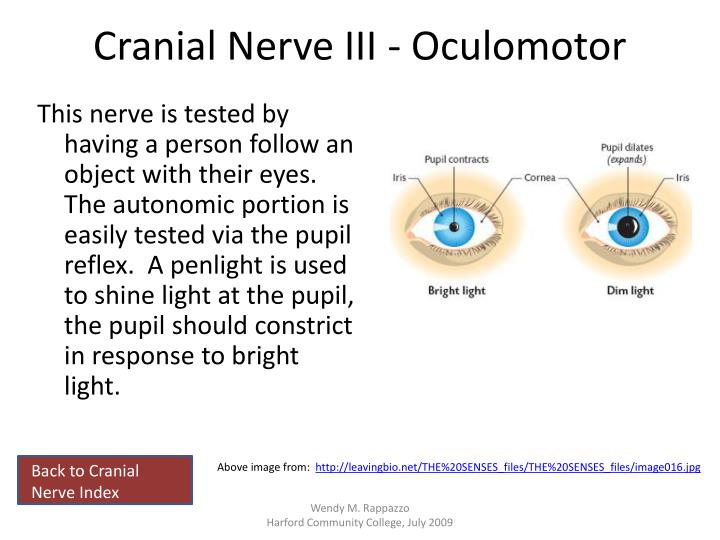

This explains why the direct response is greater than the consensual response.Ĭlinical Response - The direct response is seen in the eye which is stimulated by light and pupil constriction is stronger in this eye than in the opposite eye (consensual response).Īfferent Pathway - Stimulation of the retinal receptors by light initiate an impulse which is transmitted from the eye via the optic nerve, with the majority then crossing over at the optic chiasm to the contralateral optic tract.Įfferent Pathway - The efferent pathway begins in the parasympathetic nucleus of cranial nerve III (oculomotor nerve) located in the midbrain (mesencephalon) on the stimulated side. The proportion of axons that decussate is higher than the one that do not decussate. There are also neurons that do not decussate and which project to the oculomotor nucleus on the contralateral side of the stimulated eye. Most of the axons arising from this nucleus decussate again and synapse in the parasympathetic component of the oculomotor nucleus (ipsilateral to the stimulated eye) in the mesencephalon. While axons involved in vision reach the conscious level after synapse with the lateral geniculate nucleus, the axons involved in the PLR synapse with a third neuron in the pretectal nucleus. The afferent part of the PLR shares some common pathways (up to the level of the optic tract) with the visual pathways. Pupillary Light Reflex Clinical Exam Anatomy Pathway Sections Further Reading


 0 kommentar(er)
0 kommentar(er)
